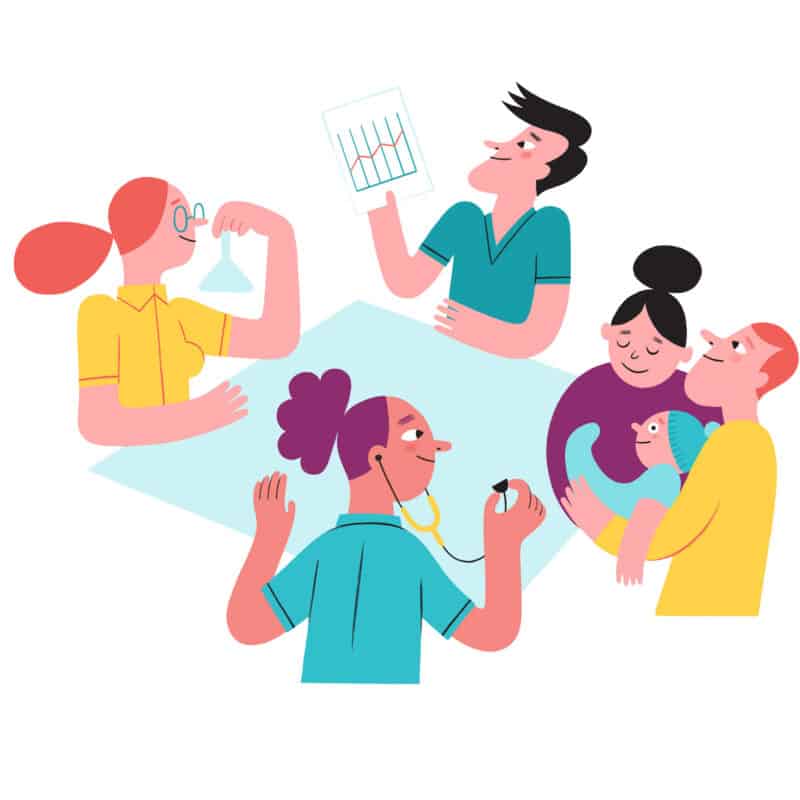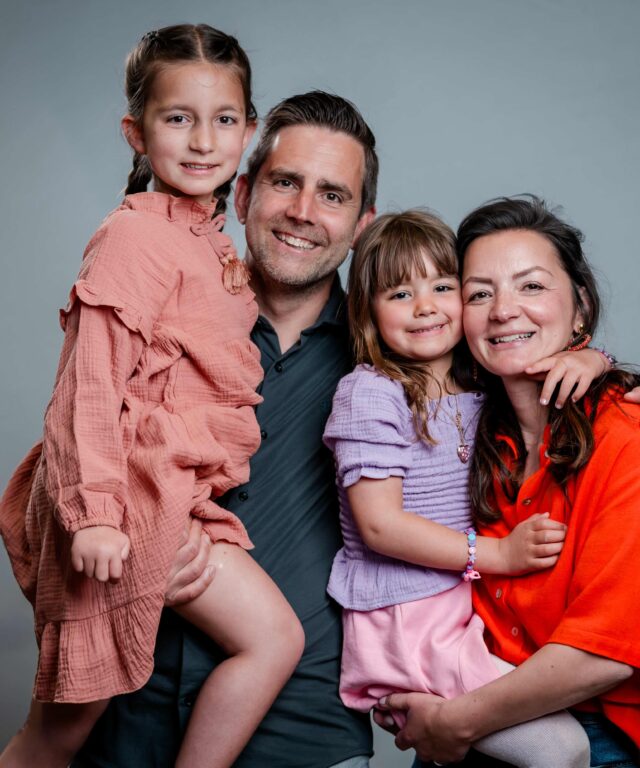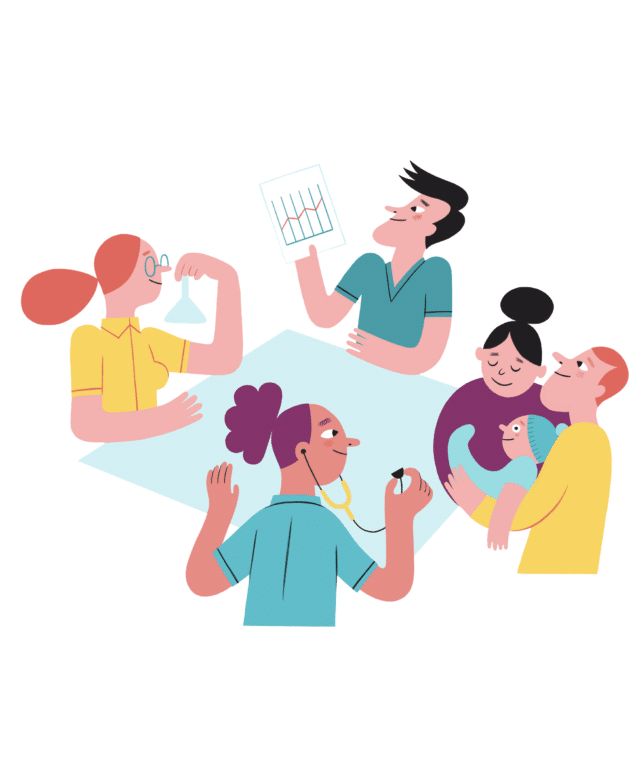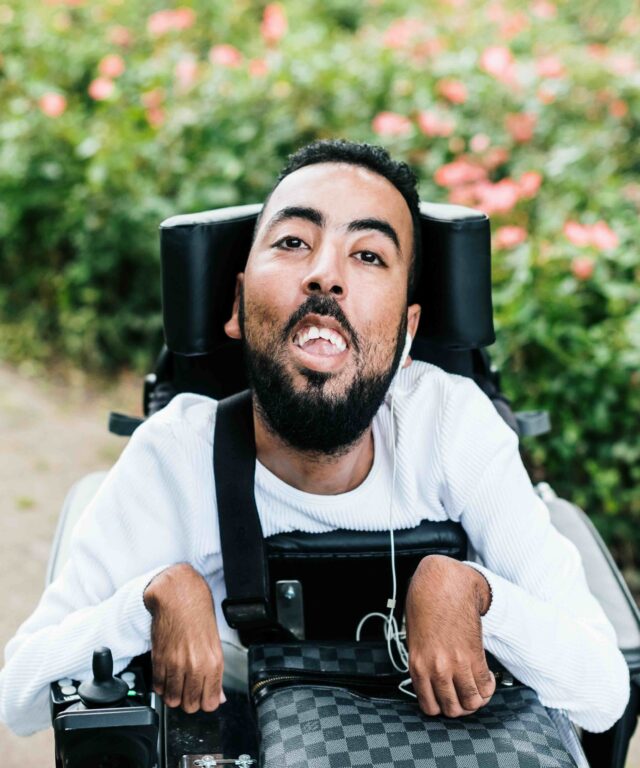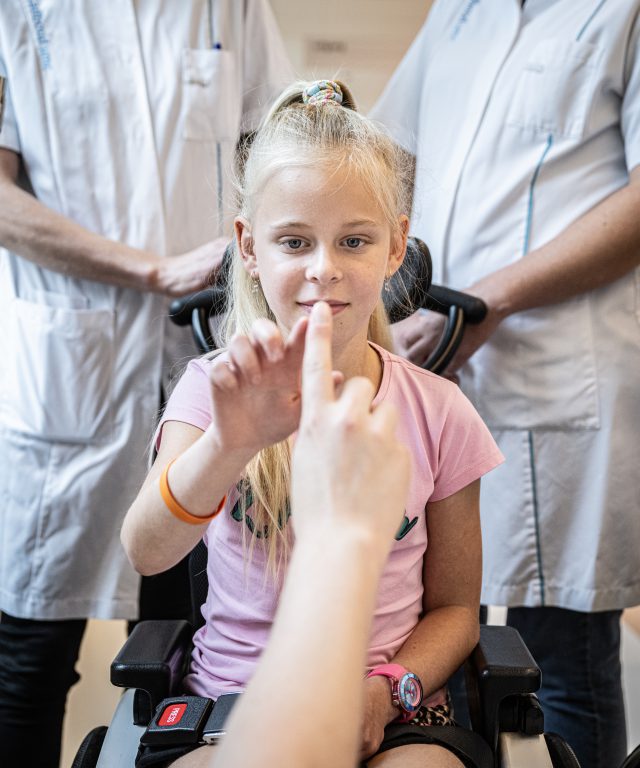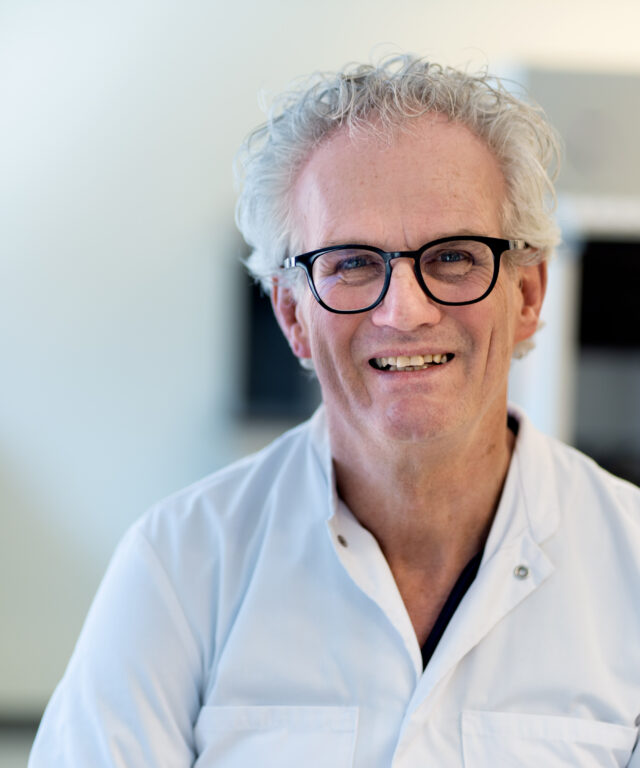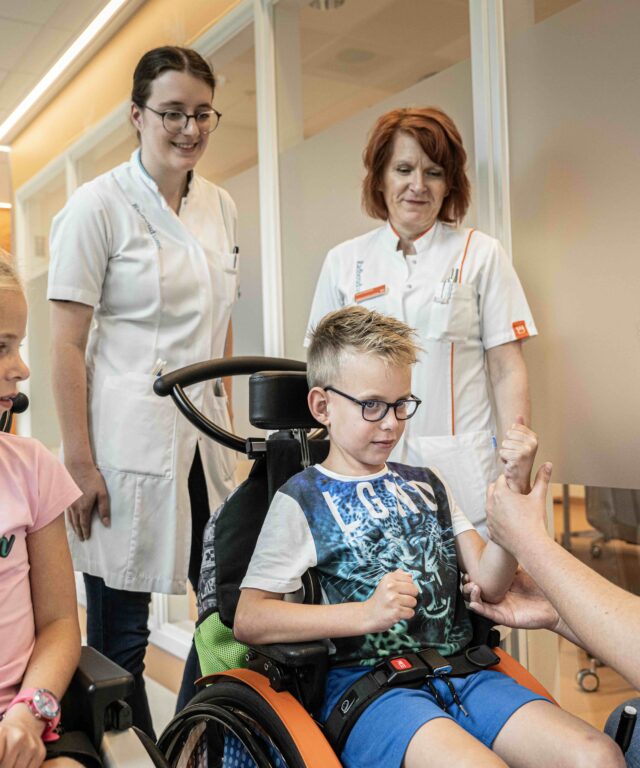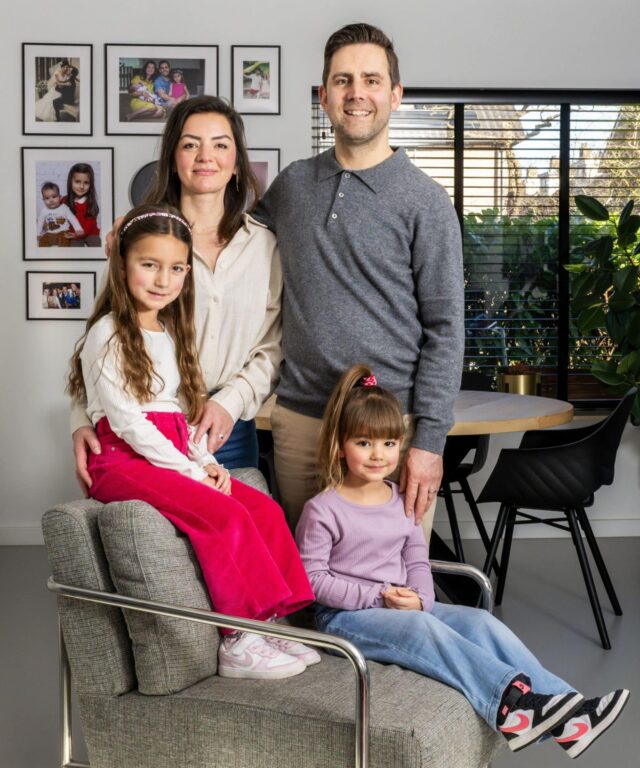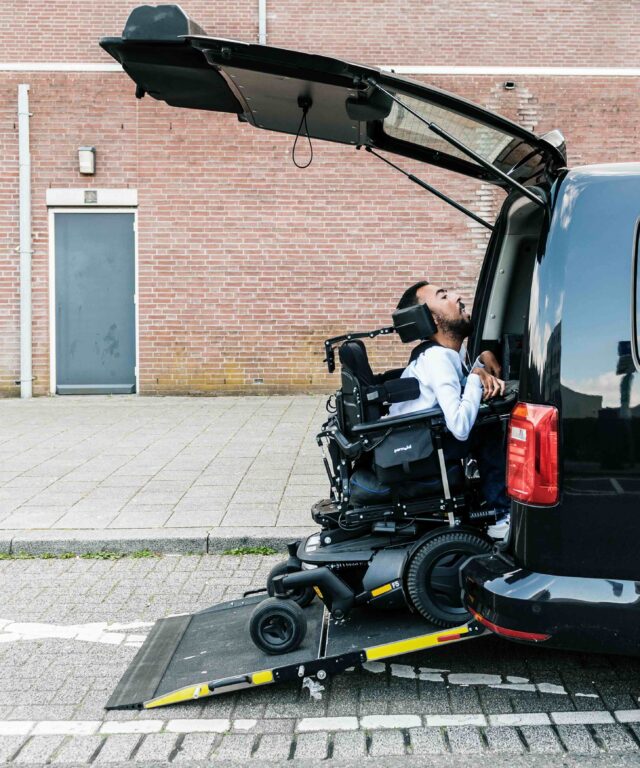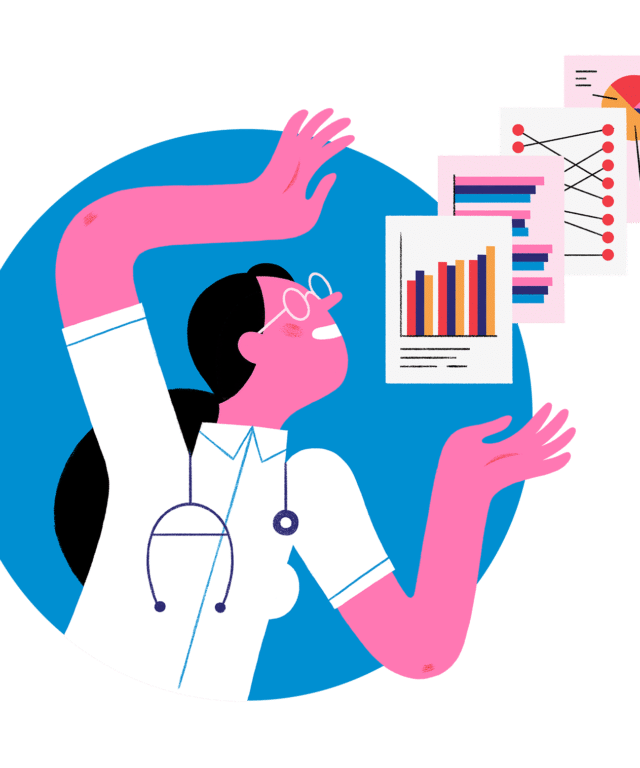LAMA2-RD
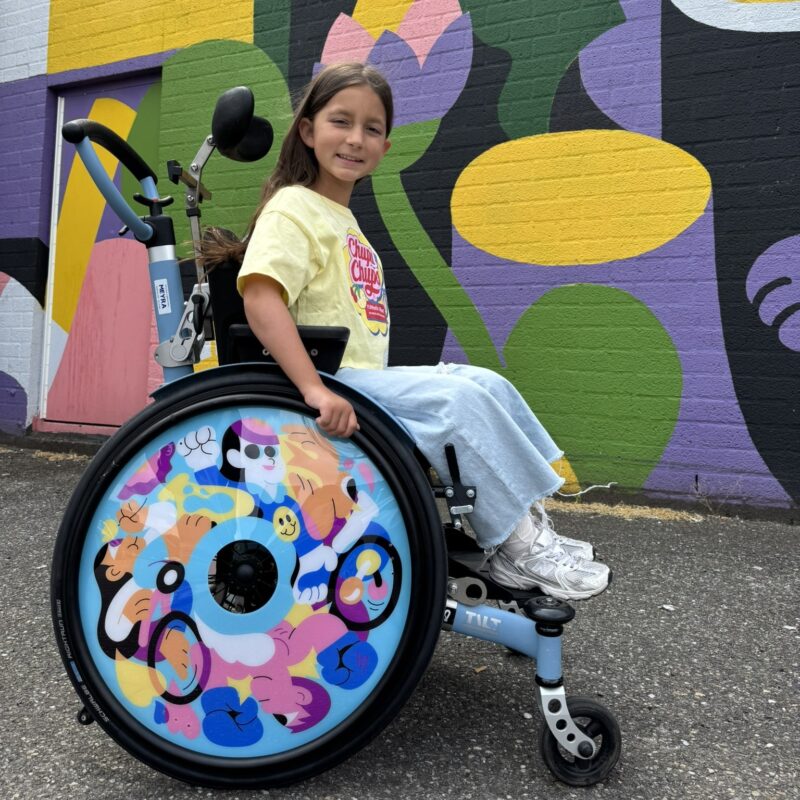

When our daughter Sara was diagnosed with LAMA2-RD, our world collapsed. We had endless questions – about her health, her future, what exactly this muscular dystrophy meant – but found no clear answers anywhere. That uncertainty and the feeling to be left alone were incredibly hard. Later we learned that many other parents had struggled with the same experiences. That’s how the idea for a brochure for the first days after the diagnosis was born. With this brochure we hope to help you overcome this extremely difficult period, give you a helping hand, and help manage the impact of the disease your child has. The brochure was created as a joint initiative of Honours students from Maastricht University, coached by Prof. Bert Smeets, and the foundation Voor Sara chaired by Bram Verbrugge. We hope that this brochure will be more than just a reliable source of information — a true pillar of support during challenging times. Stronger together!
Bram Verbrugge, chairman Foundation Voor Sara and founder of LAMA2 Europe
Receiving a LAMA2-Related Muscular Dystrophy (LAMA2-RD) diagnosis for your child is an emotional and overwhelming experience. Feelings of being lost and fear for your child’s future are completely normal, and it’s important to acknowledge them without self-judgment. Although it is a genetic disease, you are not to blame.
While this diagnosis will bring many uncertainties and fears, you are not alone. Specialists, support groups, and other families having faced similar challenges, can offer guidance and encouragement. This brochure is primarily designed to support you as a parent of a LAMA2-RD patient, but it can also help to inform other family members or close friends. It provides information and answers the 8 key questions other parents in your situation have asked, helping you navigate this journey. We hope this brochure will help you to achieve a happy and meaningful life for your child and your family.
LAMA2-related muscular dystrophy (LAMA2-RD) is a muscle disease which manifests with muscle weakness and reduced muscle tension. In LAMA2-RD, patients’ muscles are not structured properly due to the absence of, or a defect in, the ‘anchor’ that connects the muscle to the surrounding tissue, allowing it to contract properly. This anchor consists of three proteins, one of which is LAMA2. Another name for the anchor is merosin.
Genes contain the instructions for making proteins. When there is an error in these instructions, also called a gene mutation, it will lead to the production of a defective protein or no protein at all. In your case, the LAMA2 gene is affected. Everyone has 2 LAMA2 genes. To develop LAMA2-RD both genes need to carry such a mutation. Your child got one mutated LAMA2 gene from you and one from your partner. You as a parent do not have LAMA2-RD, showing that having one normal gene without the mutation is suffi cient to be healthy. You are a carrier. This is characteristic for a recessive disease, which LAMA2-RD is. As you do not have any symptoms, you could not know that you carry a mutation in the LAMA2 gene. Now you know that you and your partner are carriers, there is a 1 in 4 chance (25%) of having another child with LAMA2-RD, but there are options to prevent this. A clinical geneticist can explain these to you.
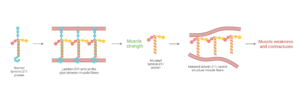
Lama2 mutation.
Clinical manifestations of LAMA2-RD can differ in severity. In the severe forms, the first muscle symptoms appear at birth or in the first few months of life. The children have weak muscles and low muscle tone (hypotonia), making them feel “floppy” and less active. They generally have a poor suck and cry. The weakness of the muscles leads to feeding difficulties and prolonged feeding times, causing problems for patients to gain sufficient weight. Weak chest muscles generally lead to breathing problems and an increased risk of lung infections, which can be fatally critical and should be treated with urgency.
As children grow, they experience delays in motor development. Most children can sit but not walk. This has led to a subdivision of LAMA2-RD in 2 groups: LAMA2-RD1 includes patients whose highest motor ability is sitting. LAMA2-RD2 includes patients who are able to walk.
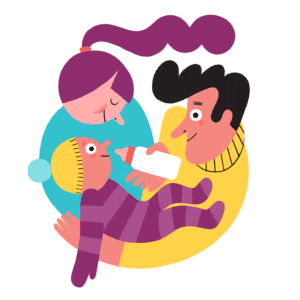
Due to the muscle weakness, the patients have problems in keeping their spine straight, and spinal deformities can develop. These have a negative effect on posture, movement, and breathing and may require spinal correction. Weakness in the neck and core muscles can make it difficult to hold up the head or sit upright. Speech can also be impacted due to weakness in the facial muscles and the enlarged tongue, seen in part of the patients. Around one-third of the patients experience seizures. The vast majority of patients have normal learning capabilities, comparable with their peers. A minor part presents with intellectual disabilities or learning difficulties. Heart complications are also rare.
As the muscles, used for breathing (respiratory muscles), weaken over time, the need for non-invasive ventilation (NIV) becomes common. This helps manage symptoms like hypoventilation and chest infections and can even reduce the decline in respiratory muscle strength. The muscle weakness also leads to diffi culties in coughing and swallowing, increasing the risk of food or liquid entering the lungs and of chest infections.
Finally, epilepsy presents in up to 35% of the patients. However, it should be remembered that LAMA2-RD may progress at different speed or severity and present with different symptoms in patients.
Over time, mobility may decline, and the eventual need for a wheelchair can arise. As respiratory function gradually deteriorates, breathing difficulties may develop, increasing the likelihood of requiring noninvasive ventilation (NIV). Both in mild and severe forms weakness in the back muscles can contribute to scoliosis, while cardiomyopathy may also occur in some individuals. Part of the difference between the severe and milder form of LAMA2-RD can be explained by the amount of functional LAMA2, present in the patient. When there is no functional LAMA2, disease manifestations are generally severe, whereas in patients with milder disease, usually some functional protein can be detected.
Having LAMA2-RD has a negative effect on the quality of life. However, there are things you can do that can improve the quality of life for your child with LAMA2-RD.
More specific information is listed in the links on our website.
Diagnosing LAMA2-RDs involves several steps. If your child has received this diagnosis understanding the diagnostic procedure can be helpful.
Recognizing symptoms: Generally, you as a parent notice that your child develops differently. Your baby isn’t lifting its head or kicking its feet as much as other babies. You may see early signs of weak muscles, like poor cry and feeding problems. Later your child may experience delays or troubles with sitting and crawling. Observing another child with muscle disease can also raise suspicion.
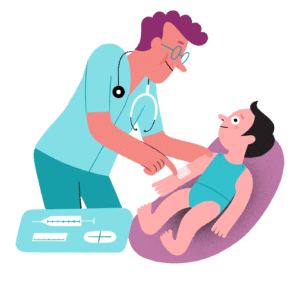
Neurological and physical examination: A specialist—usually a neurologist—will assess your child’s muscle strength and reflexes to identify any signs of abnormality. They will also check your child’s spine for conditions like scoliosis. If a muscle disorder is suspected, further tests will be necessary.
Lab tests: Blood tests can help detect muscle damage by measuring levels of a protein called creatine kinase (CK for short), which is released into the bloodstream when muscles are damaged.
Genetic Testing: The most reliable way to diagnose LAMA2-RDs is through a genetic test. This is done early in the process when a genetic muscle disease is suspected. This test analyses all genes for the presence of mutations. Finding 2 mutations in the LAMA2-gene, and confirming that one of them comes from each parent, confirms the diagnosis of LAMA2-RD. Since many muscle diseases exist, all genes are tested at once, as it is not possible to determine which disease is present based on clinical symptoms alone in young children. Therefore, this is the fastest way to a diagnosis in all these diseases.
In case a diagnosis is confirmed by mutations in the LAMA2 gene, options exist to prevent that you get another child with LAMA2-RD. A clinical geneticist can explain you the possibility of prenatal diagnosis or preimplantation genetic testing. After a diagnosis has been established, additional clinical investigations may be carried out to get a better idea on how LAMA2-RD will develop in your child. This is called the prognosis.
Receiving a LAMA2-RD diagnosis for your child will be a major shock coming out-of-the blue. Every parent wants to give his or her child a carefree start in a fulfilling life and a bright future, but that does not seem possible anymore. What to do now? You feel lost, but luckily you are not alone. Specialists, support groups, and other families are here to offer guidance and support.
Your first priority will be understanding what this diagnosis means for your child and making sure that the child gets the best care possible. For that, throughout Europe, specialized centres exist with specific expertise on childhood muscle disease in general and on LAMA2-RD in particular. It is important to connect to such a centre, as LAMA2-RD is so rare that your child may be the first and only patient your neurologist will see. The specialized centres see many of them and are therefore more experienced in providing optimal care. Please identify the centre closest to you. The patient organization LAMA2-Europe can help you with this.
Taking care of your own mental well-being is also crucial. Prioritizing your emotional health allows you to be a source of strength for your child and navigate the journey ahead with resilience. Seeking support from professional counselors, therapists, or peer communities is a positive step, not a sign of weakness. These resources can help you process emotions, find coping strategies, and provide reassurance as you adjust to this new reality.
As your child grows, open and age-appropriate communication about the impact of LAMA2-RD on his or her life is essential. Avoiding discussions can create unnecessary stress, while honest conversations help them build confidence, independence, and advocacy skills. Children are often able to indicate when they are ready to talk, whether through questions, curiosity or subtle cues.
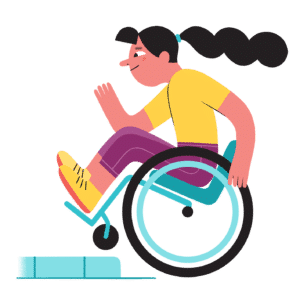 Experts advise to pay close attention to their words and behaviors to gauge their readiness. Encourage their questions, offer simple explanations, and use positive language to foster understanding and empowerment. Initiate discussions when the time feels right, but do not force them, if your child is not ready for it.
Experts advise to pay close attention to their words and behaviors to gauge their readiness. Encourage their questions, offer simple explanations, and use positive language to foster understanding and empowerment. Initiate discussions when the time feels right, but do not force them, if your child is not ready for it.
Finally, maintaining strong relationships with your partner, family, and close friends is important. A diagnosis like this affects the entire family, and everyone copes differently. Staying connected with loved ones provides a solid foundation of support. Open communication and spending time together can help everyone feel more secure and united.
Every child with LAMA2-RD is unique, and so is every family’s journey. Yet, many patients and their families share similar experiences. By seeking support, prioritizing emotional well-being, and focusing on your child’s strengths, you can navigate this diagnosis with resilience and hope. And remember— many individuals with LAMA2-RD have become true role models, not only for other patients but also for the whole community. Their determination to follow their dreams, despite the challenges they face, is deeply inspiring. The strength they show serves as an example to us all.
For personal stories from families with similar experiences, please refer to this website.
A LAMA2-RD diagnosis can significantly impact family dynamics, often shifting attention toward the affected child. It’s important to ensure that siblings also feel supported and continue to experience a fulfilling and happy childhood. Some siblings may hesitate to express their own struggles, fearing they will add to parental stress, so fostering open communication and regularly checking in with them is essential.
While siblings may naturally want to help with caregiving, it’s important to ensure that their involvement remains voluntary and does not feel like an obligation. Acknowledging their contributions with gratitude, rather than expectation, can help maintain a healthy balance. Additionally, setting aside dedicated one-on-one time with each sibling allows them to pursue their own interests and personal growth.
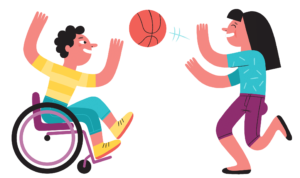
Supporting a child who cannot walk can be expensive, with costs varying depending on your child’s needs, the available solutions in your area, and their affordability. For example, most children with LAMA2-RD need a wheelchair to get around or require changes in the layout of their home to carry out daily activities independently.
In high-income countries, electric wheelchairs are commonly used. They typically cost several thousands of dollars but may be covered by insurance or government programs. In contrast, in low-income countries, electric wheelchairs are unaffordable for most parents, in which case standard wheelchairs are the best alternative, as they are generally more available, less expensive, or more subsidized across different regions.
Similarly, home alterations, such as a stair lift, are often carried out by professional firms. While this can be expensive, costs may be covered by government initiatives or insurance. However, in low-income countries, families may need to make these adjustments themselves using local materials and available resources. Simple modifications like widening doorways, adding handrails in bathrooms, installing ramps for wheelchair access, or using portable shower chairs can make a big difference in improving your child’s independence and comfort at home.
To determine the needs of your child and explore available options, consult your clinician, your insurance provider, and the local government.
Research into LAMA2-RD is progressing aiming for trial readiness, which means that everything is in place to start experimental treatments. This requires knowledge of the natural history of LAMA2-RD (the progression of a disease process in an individual over time) and the preclinical data on the effectiveness and safety of the treatment.
Treatment strategies focus on correcting the genetic defect in patients, replacing the dysfunctional or absent LAMA2 protein with another protein that can take-over the LAMA2 function or administering healthy muscle stem cells of the patient to repair the muscle. Part of the research is not on the eventual treatment but focuses on improving quality of life. This is a rapidly evolving theme, but several websites, like the one from Lama2 Europe and Cure CMD provide up-to-date information on ongoing research and more particular on clinical trials.
In LAMA2-RD, patients have a change (mutation) in the LAMA2 gene. This gene is responsible for making a protein that helps connect muscle fibers.
There are two main types of gene therapy being developed. Both use a virus to help deliver the treatment:
There is also another type of therapy that works directly on muscle stem cells. A small muscle biopsy is taken from the patient and muscle stem cells (the parent cells) are isolated and grown from this. In the lab, the mistake in the LAMA2 gene in these cells is corrected. The healthy stem cells are then grown in large numbers. Finally, they are injected back into the patient. This therapy aims to fix the mutation in the patient’s own muscle stem cells.
